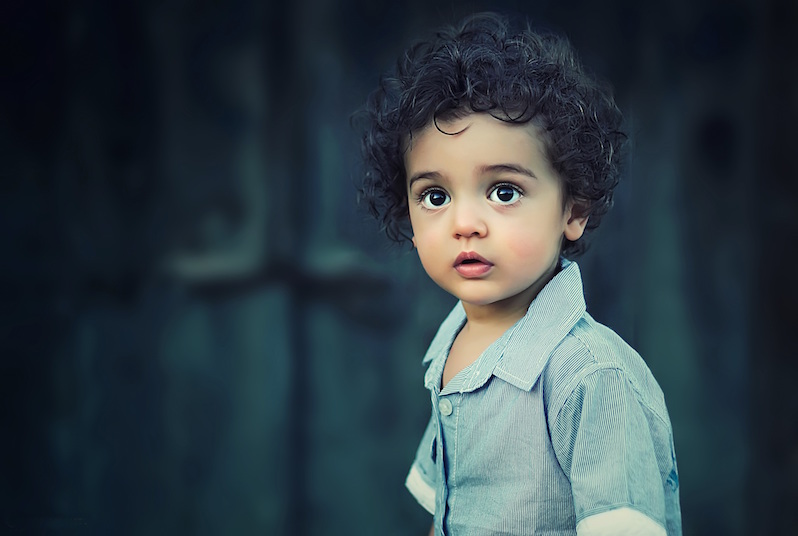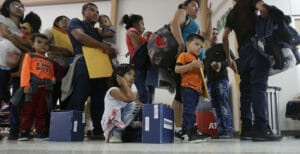When Children Witness Violence at Home
Without interventions, youngsters exposed to toxic conflict in the household can carry scars throughout their lives. Here are some innovative ways to help the most vulnerable victims as the start of school approaches. Pixabay
1
2
Pixabay
1
2
AWBW leaders aren’t art therapists—rather, they use art as a therapeutic tool. They are trained to make referrals to mental health professionals when necessary.
Children in the program are encouraged to select the medium that works best for them, from painting and creating collages to digital storytelling. “It’s all about expressing themselves using their own creativity,” Piacenza says.
Because community counseling can be hard for families to access, many schools look for ways to offer on-site therapy. A major player in this field is Cognitive Behavioral Intervention for Trauma in Schools.
“The beauty of a school-based program is early intervention, and we can reach a variety of children at one place,” says RAND Corp.’s Jaycox, who developed CBITS along with collaborators at the Los Angeles Unified School District and the University of California, Los Angeles.
CBITS trains professionals, including social workers and psychologists, who are placed in schools by organizations such as school districts and community agencies. The program has been implemented in more than a dozen states and four other countries.
Children in the program receive group therapy as well as private counseling. “In the groups, they get peer support, which is one of the key ingredients,” Jaycox says. “There are also individual breakout sessions to work on specific trauma memories and to do some personal planning. These sessions are designed for work too sensitive to do in a group.”
These students often engage in violent behaviors, according to Pearson, who counsels children in Central Oregon. “They hit and punch because they’ve been exposed to that. They think that’s how you solve problems and get people to listen.”
Therefore, CBITS offers basic educational components for teachers as well as therapists. Teachers get tips on responding compassionately when traumatized children act out. “There’s a lot of movement in the area of school discipline,” Jaycox says. “We’re recognizing negative behavior as (the result of) something that happened to the child.”
This school-based program not only helps reduce children’s trauma symptoms, but it also serves another purpose. “It tends to be a good first experience, and it opens the door for getting help for these kinds of problems in the future,” Jaycox says. “Many of these kids are exposed to violence often—it’s not a one-shot situation.”
These are just a few current efforts to reach out to traumatized children. In a comprehensive review, Futures Without Violence outlines 23 programs that feature everything from home visits (Project Support) to group counseling for teenagers (Structured Psychotherapy for Adolescents Responding to Chronic Stress).
The existence of so many programs is encouraging, but how well do they work? Clinical trials, especially in the case of older programs, are conducted to pinpoint their effectiveness.
Studies show that CBITS, which was launched in schools in 1997, significantly lowers students’ trauma symptoms, including anxiety, depression, irritability and anger. It heightens their ability to concentrate in class, and to a lesser extent improves disruptive behaviors.
Newer programs such as CARE are still being evaluated. Currently, two studies are underway to determine how useful CARE training sessions are for foster parents.
An ongoing area of concern is the lack of studies involving youngsters from varied cultural backgrounds.
“We need to know these strategies can be replicated to different situations and cultures,” says Messer, who developed the CARE program.
More funding and additional testing are necessary for the success of culture-specific programs, according to Kinnicutt of Futures Without Violence. “So many people still don’t have access to what they need. The next generation of this work will be to broaden our base.”
Many professionals in the area of domestic violence agree that awareness campaigns and programs are making a significant difference in many children’s lives.
“In the field overall, we’ve made tremendous progress,” Kinnicutt says. “We know so much more about how to help children, and there’s more public urgency to do something about it.”
Formal studies may show statistical progress, while anecdotal evidence reveals powerful transformation in individuals.
One young boy came to stay in a domestic violence shelter and at first acted out violently to express his trauma. His behavior improved once he started creating art through A Window Between Worlds, and Program Director Piacenza says he even became an advocate when newcomers arrived at the shelter. “He would tell them things were going to be OK, because they had Window there.”
Barbara Dunlap is an award-winning journalist with years of writing and editing experience at publications such as the San Francisco Chronicle. She also received a Knight Foundation National Copy Editing Fellowship to study the coverage of family issues in newspapers.
Your support matters…
SUPPORT TRUTHDIG
Independent journalism is under threat and overshadowed by heavily funded mainstream media.
You can help level the playing field. Become a member.
Your tax-deductible contribution keeps us digging beneath the headlines to give you thought-provoking, investigative reporting and analysis that unearths what's really happening- without compromise.
Give today to support our courageous, independent journalists.



You need to be a supporter to comment.
There are currently no responses to this article.
Be the first to respond.